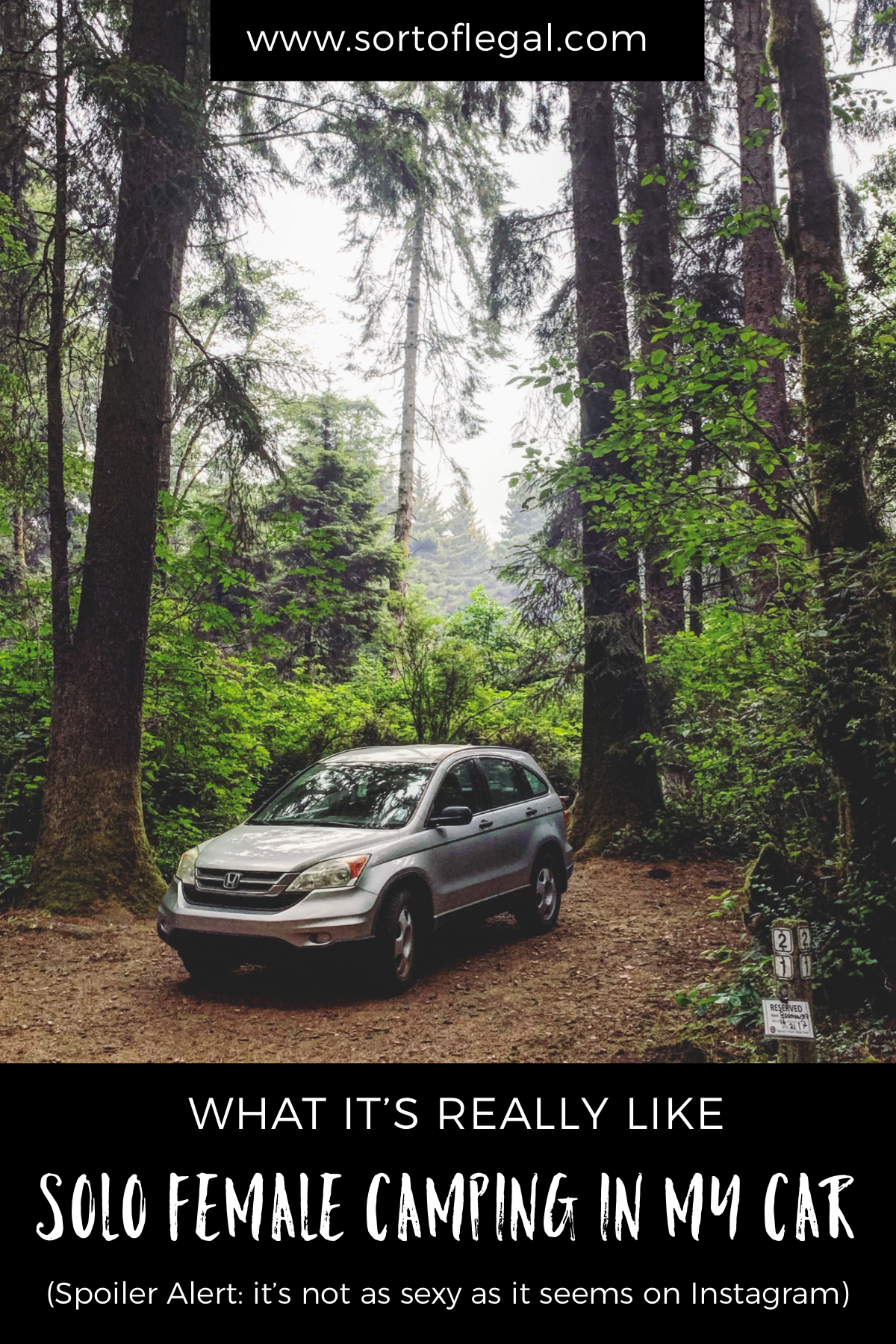
I Woke Up in a Car…Solo Car Camping IN my Honda CRV
I spent 8 of the first 9 days of my solo, indefinite USA road trip sleeping in my car (my full travel journal here). I’ve since spent some time reflecting on the experience and wanted to share some thoughts on why I did it, how I did it, what it was like, and why I think it’s a privilege.
Update: I ended up spending the whole summer Van Life-ing in my CRV. You can check out exactly where I stayed here, or read more about 20 different types of places you can stay when van or vehicle-lifing here (#vlife).
Car camping in my Honda CRV was not the original plan. When I first envisioned my USA road trip, I imagined staying in a mix of unique, affordable AirBnBs, hotels, motels, some couches, and nerves permitting, a little bit of solo camping.
But as the trip approached and I started researching routes and options, I remembered one of my primary frustrations with USA travel the last time I did long term travel: it’s f&*cking expensive. Even “less expensive,” states like Idaho were not cheap, or even that affordable for a solo traveler, unless I wanted to risk staying in a sketchy area, which I did not.
Why I Decided to Car Camp in my Honda CRV
Bouyed by how comfortable and safe I felt sleeping in tents while Backpacking the Trans-Catalina Trailwith my friend Brandon, and the relatively low cost of booking campsites, I decided that I wanted to incorporate more camping into my trip. But I also knew myself. I’m a little afraid of the dark.
I’ll hike and trail run alone, but have in every single place I’ve lived woken up on more than one occasion planning my escape because I feared someone was breaking in. Anyone that has ever stayed in a tent with me will attest that something similar happens when I’m camping, though sometimes the fear is animals instead of people.
I needed a back-up plan for the nights I planned to camp. Going to a hotel/motel/Holiday Inn, of course, was an option, but that would be a last resort because defeat the cost savings. And, although, I didn’t admit it for a while, I knew what that back-up plan was: literal car camping – sleeping in my car!
I’d lived in San Diego, California enough to become familiar with, and even envious of #vanlife culture. Allthough I wasn’t exactly sure how I was going to set-up a place to sleep in my CRV, and was a little reluctant to tell some friends and family members (so I didn’t), I was secretly excited about the prospect.
How I Made a Bed in the Back of My Honda CRV
As the trip approached, I decided that I wanted the option of sleeping in my car if I wanted to at campsites or needed to elsewhere. Ok, what I wannnntttteeedwas a travel van like a converted Ford Transit Van or a Mercedes Sprinter Vanor a Rialta RVjust a plain ‘ole creepy white van that I could fit a bed in. But what I had the time and budget for was figuring out how to sleep in my trusty 2010 Honda CRV. I toyed with different ideas, including:
- Purchasing a blow up mattress designed for the back seat from Amazon
- A tent that attaches to the back of the CRV
- Leaning the front seat all the way back
- Folding the back seats down building some type of platform to even out the surface, or buying strong plastic containers to do the same
- Folding the back seats all the way up and sleeping on my side on a sleeping pad and mound of blankets and sleeping bag
Figuring out an option that I could prepare in you know, a week or two by myself, that would give me an even-enough surface to lay across with enough room to stretch out (I’m not big but neither is a CRV) while ensuring I still had room to store my stuff was tricky.
After a lot of Pinteresting (follow me on Pinterest!) laying in my car at different angles, and literally, just staring at the back of my car thinking, I finally had the idea…I’d take out the back seats entirely to get more space and a relatively flat surface, cut up an old mattress topper to serve as a “bed” on one side, cut up foam or egg shell bed topper from Wal-Mart to even out the surface, and use something to prop up the head area.
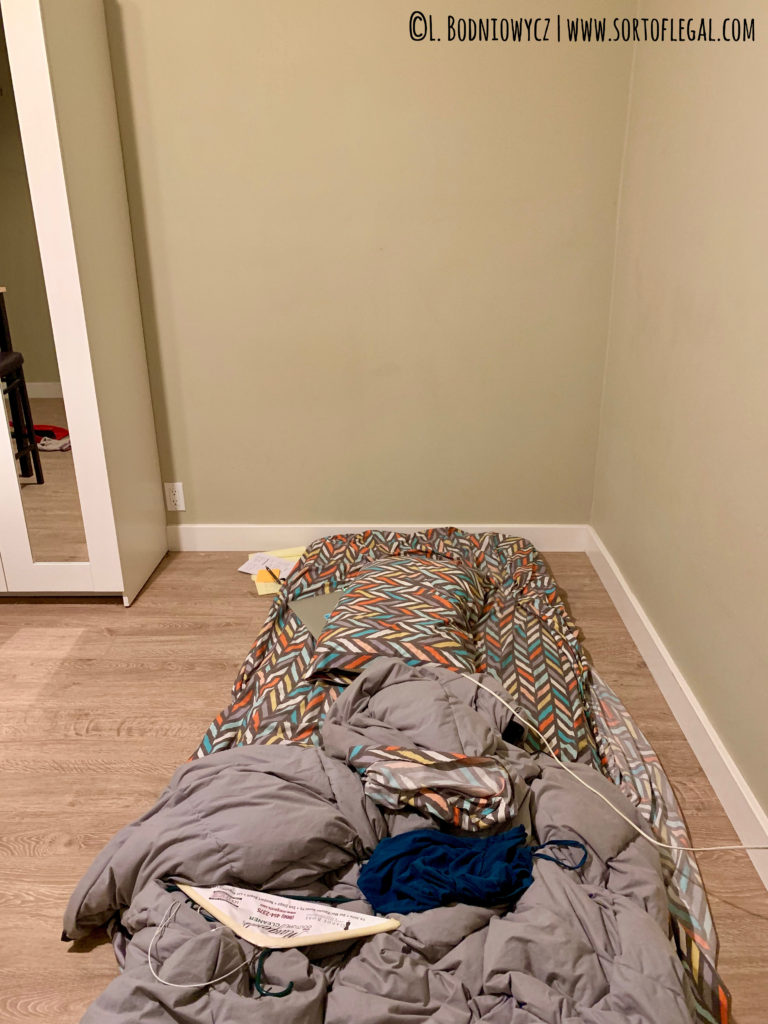
Practice Run – Last Night in My Old Studio 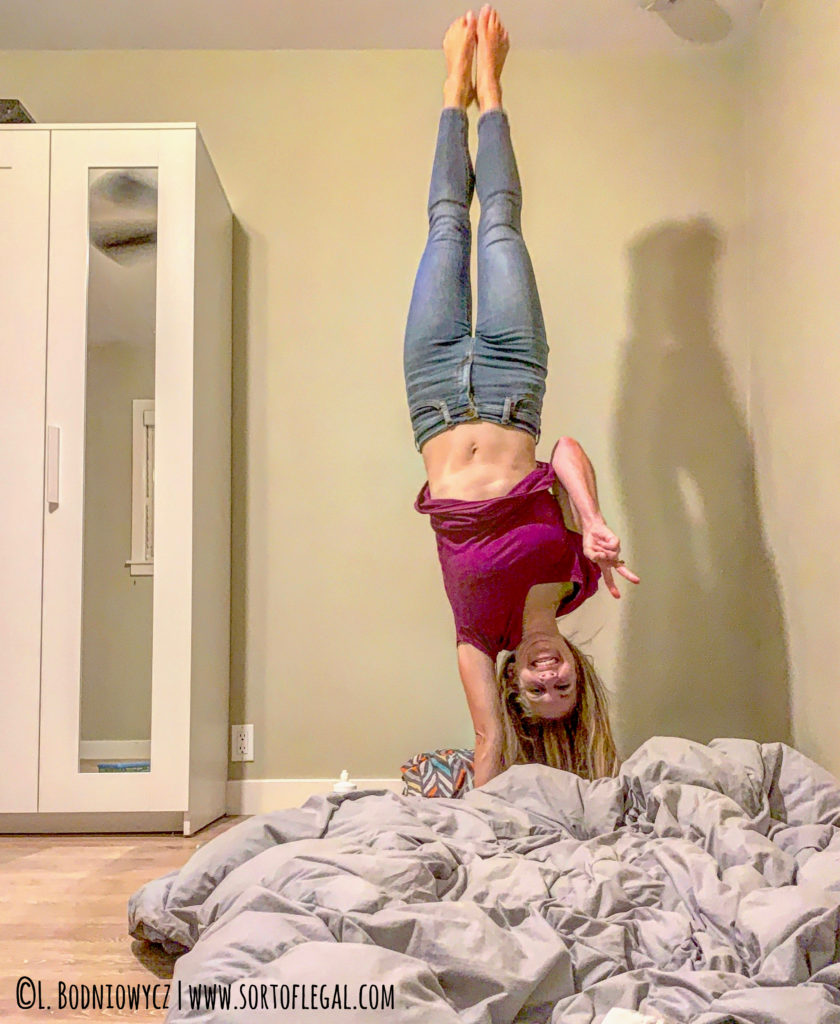
Last Night Again. Thought my parents might want to see how their investment in gymnastics turned out. 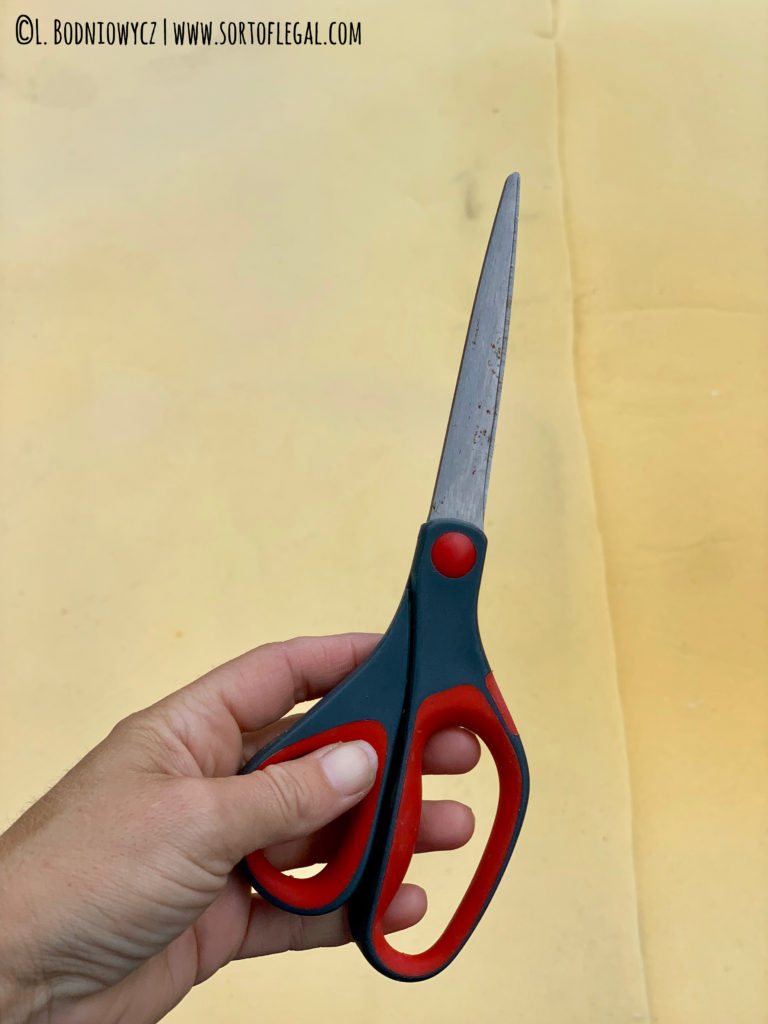
High end tools are needed. 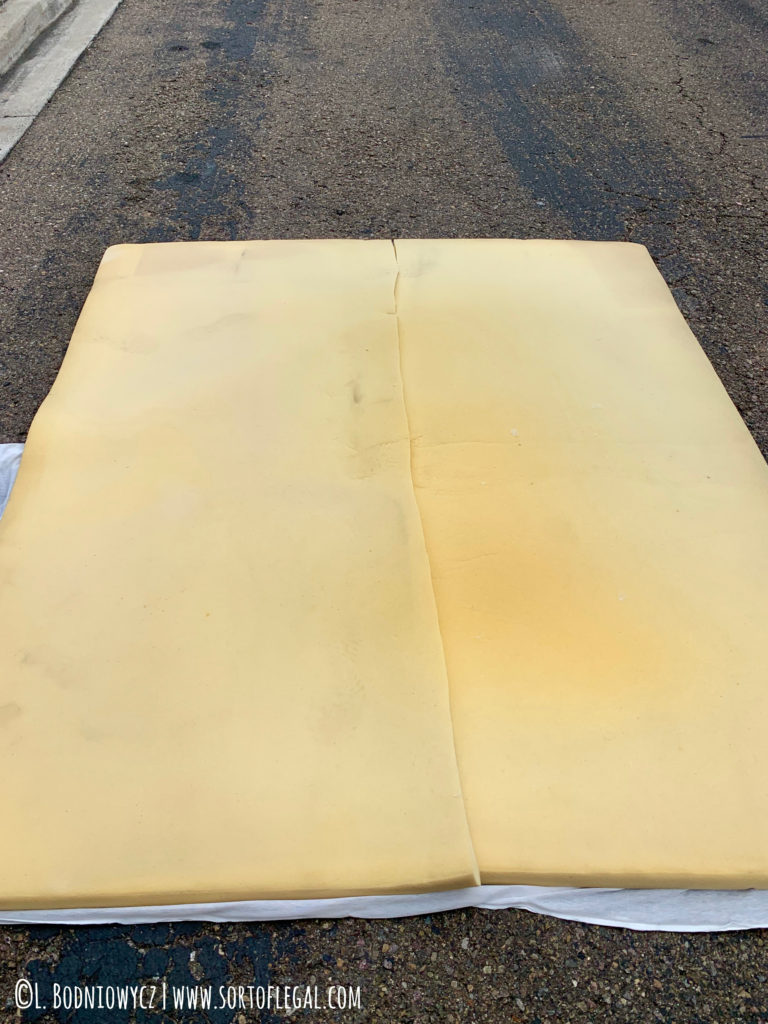
Cutting the mattress topper 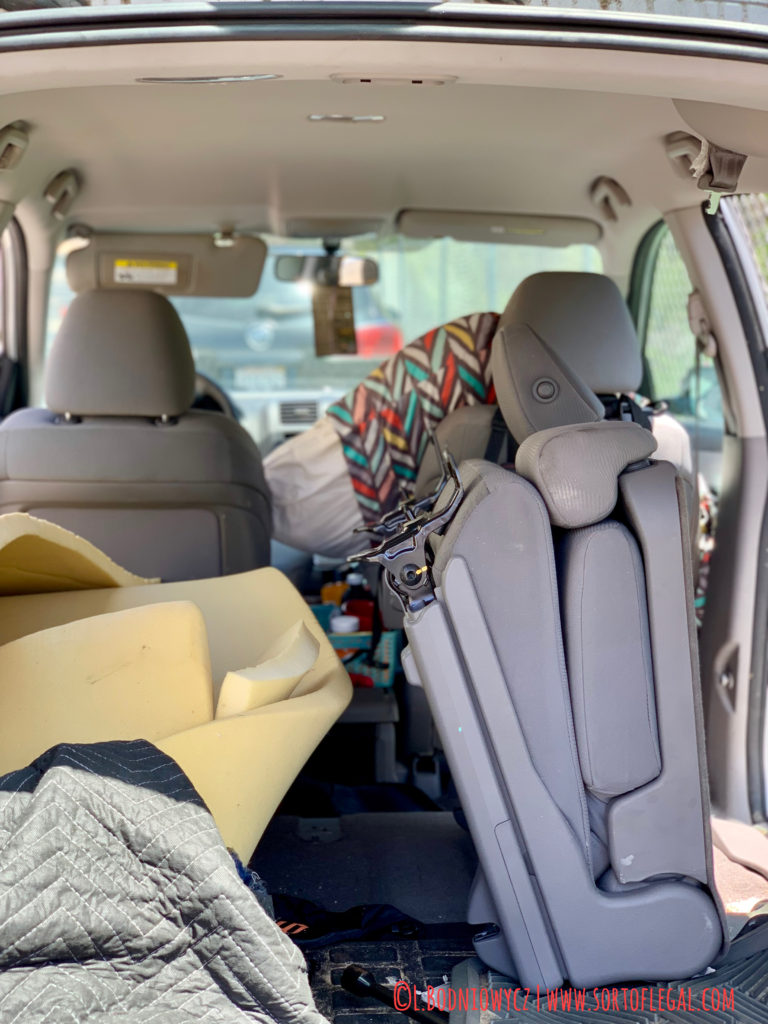
Very proud of myself for figuring out how to remove this seat. 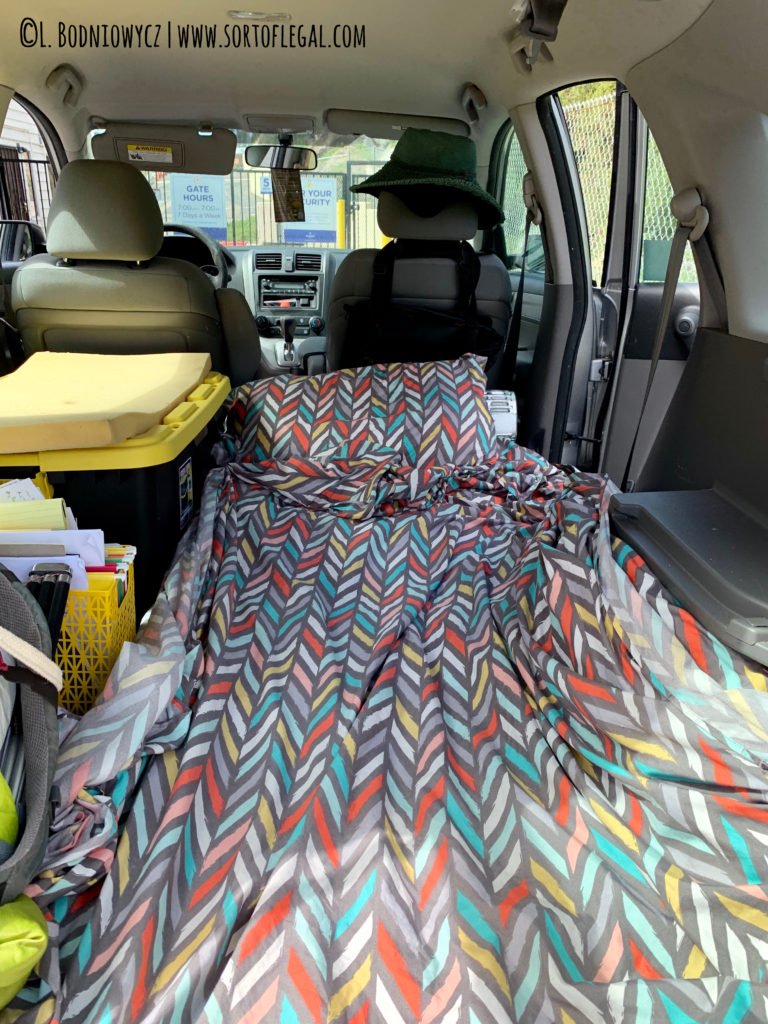
Finished product! Sheets still make me smile.
…and (with a little YouTube help) it worked! There were, of course, adjustments along the way, and optimizing the space through organization is an ongoing thing, but I made my CRV into a (sort-of) camper-mobile.
Comfort & Convenience of Car Camping in my Honda CRV
My #vanlife “build” in my CRV was completely unprofessional. I mean, I used 99 cent stacked plastic boxes from Wal-Mart to prop up the head section of my “bed,” no measuring, and only two tools, scissors and a socket wrench. And I wouldn’t call it pretty – in other than my sheets, which I still love. But, I am thrilled with how it worked out.
Sleeping in my CRV was really comfortable. Not relatively comfortable, like sleeping on a sleeping pad in a tent, truly comfortable. It feels like sleeping in a twin bed. I blocked the windows at night which also meant I could sleep past day-break, which as many of you know, is near impossible in a tent when the sun is shining in.
After the first two nights sleeping in it, my lil CRV started to feel “homey,” I’d wake up humming Something Corporate’s angsty pop-punk classic “I Woke Up in a Car” (weird how these things just come to you):
…and I’d look forward to my night time routine of covering up the windows and curling up with a Netflix download on my Kindle at the end of the night. Human beings really are adaptable.
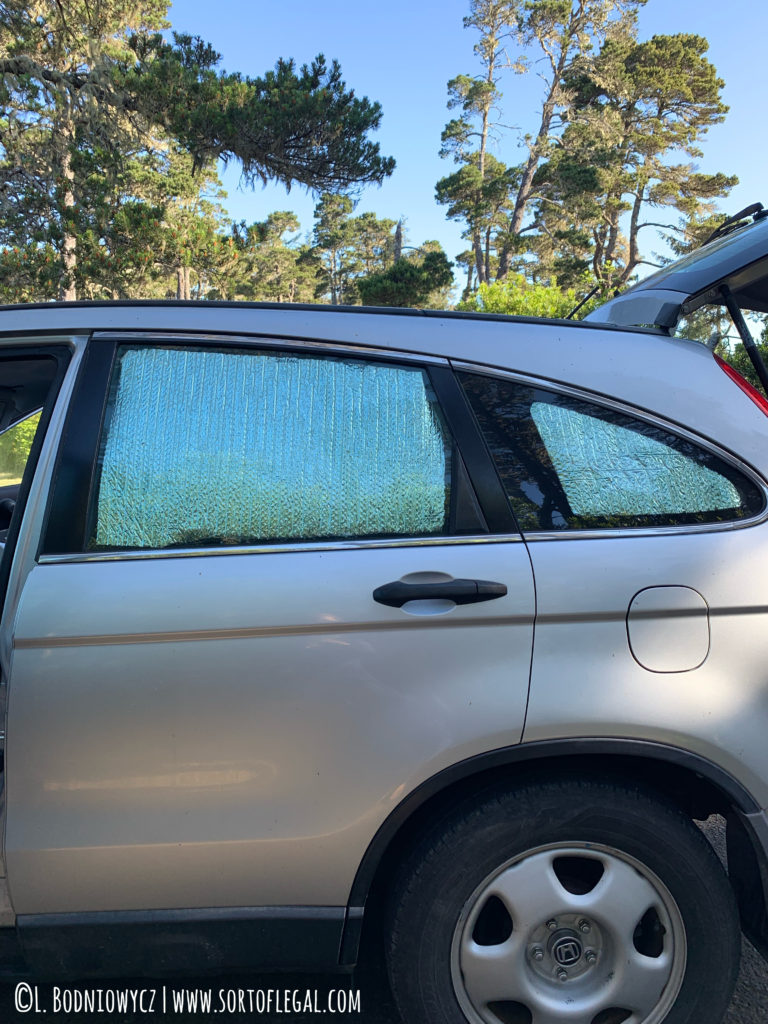
Night window covering. Don’t keep them on during the day in the heat – can’t see and your window could explode! 
Looks sketchy AF, feels cozy. Hanging headlamp so it doesn’t get lost. 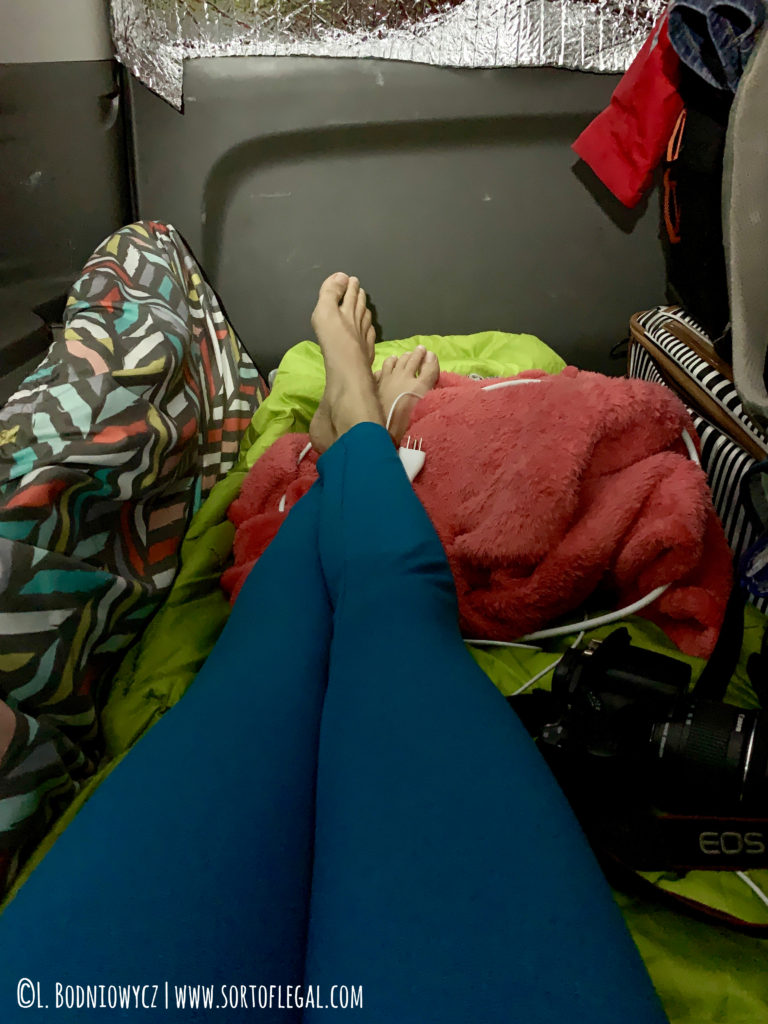
Long Johns = perfect camping PJs.
It was also really convenient. Since I was staying at campgrounds, I had many of the same luxuries as you would at a hotel – showers (sometimes, indoor and heated), bathrooms (sometimes indoor and flushing), access to potable water. These things just weren’t in the same room as me.
Working and eating were also easy. Since I had campground-cooking essentials with me, I didn’t have to go out for every meal. I did buy some meals, but cooked, or at least boiled water, a lot in camp. Breakfast was coffee with vital proteins collagen powder (sister got me cooked), a banana, and a Kind Bar. Dinners were simple things like tuna mac, this vegetarian pesto quinoa, and yeah, creamy chicken ramen noodles (which are the best ones but not always available).
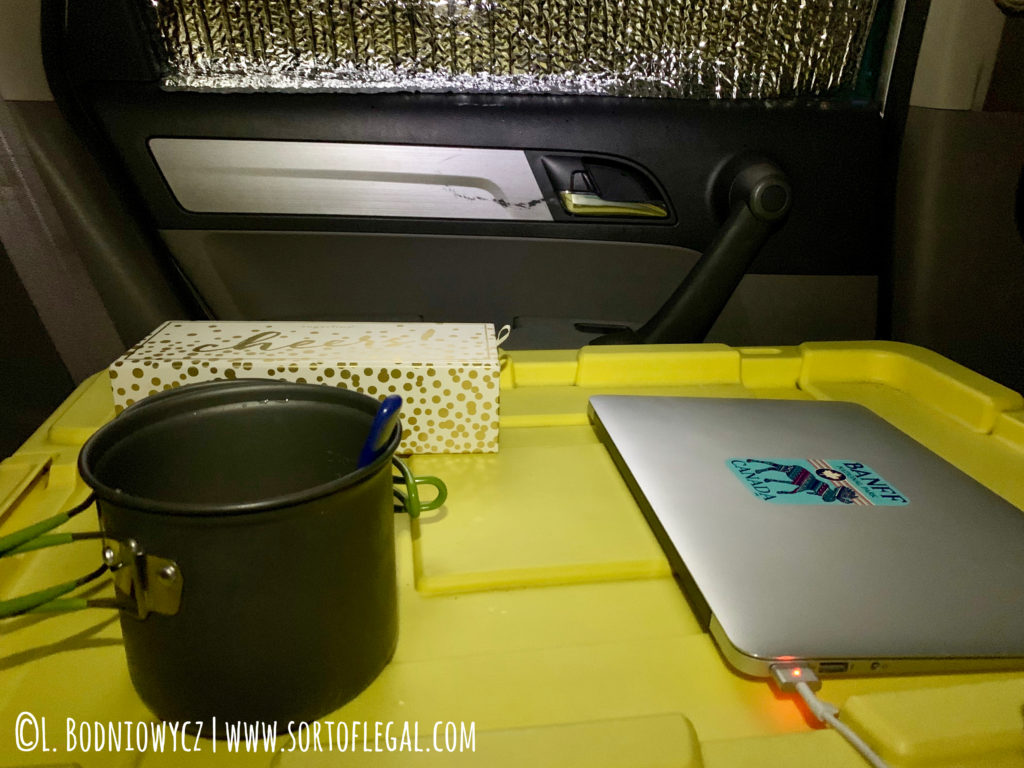
I mostly worked in my car, but made one trip to the San Clemente Library. Once I discovered the DC to AC inverter , I could charge my laptop and work at the campgrounds. Then, on my drives between campsites, I could find a pretty place to park, pop open the back of the CRV and work comfortably on my laptop. The car prevented the glare that makes working outside annoying even in great weather and kept me cozy and even when it was windier outside. I got a lot done during these stops.
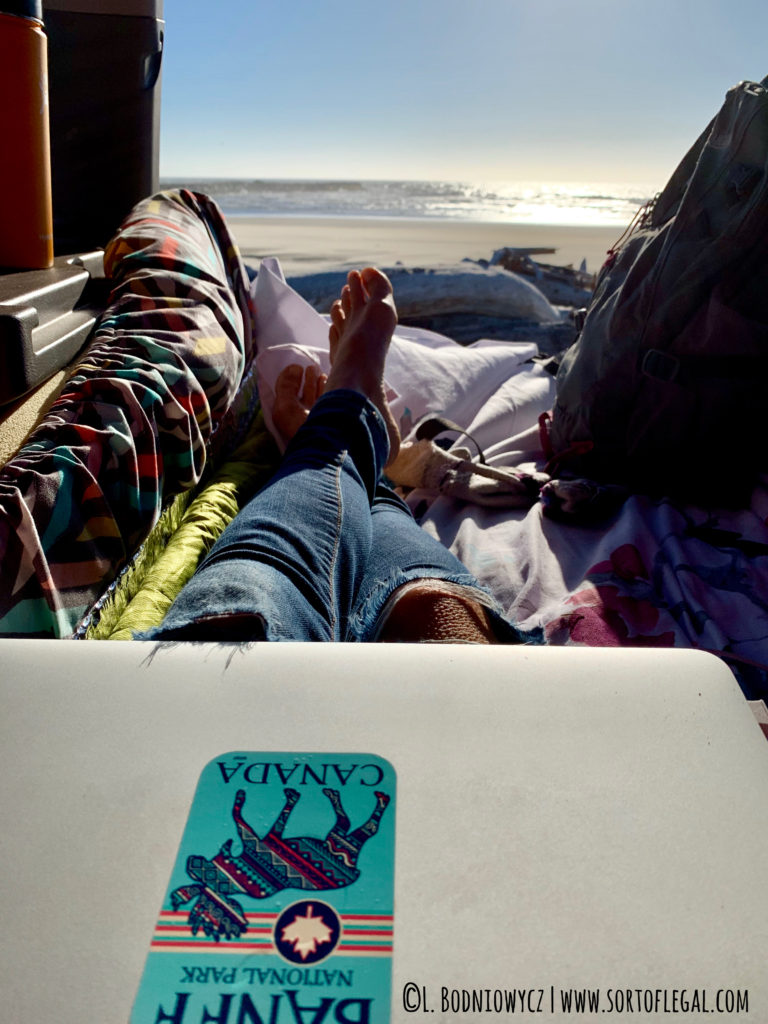
Finished a project here just in time for sunset. Brandon, Oregon. 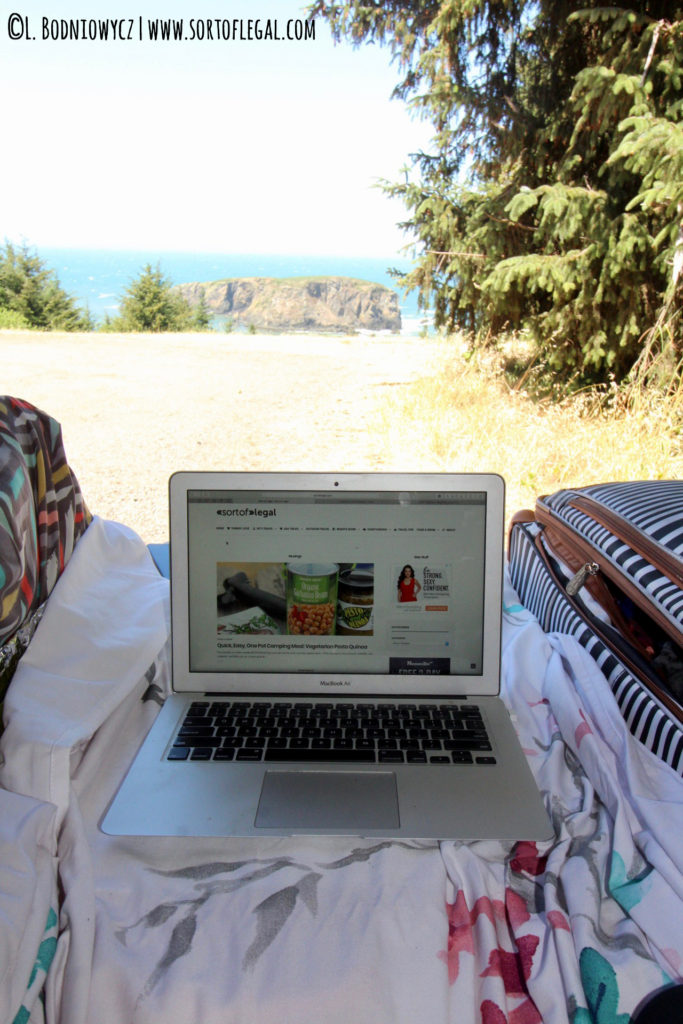
Giddy at where I was working…even though I didn’t want to be working. Oregon.
When long-term traveling, the constant searching and figuring out where to eat and work and then getting there can be time consuming and mentally exhausting, not to mention, expensive. So, being able to eat and work pretty much anywhere saved me time and stress. And from a work perspective, it can be hard to get into a good work flow in coffee shops because you can’t stay there all day (which is why I love libraries and co-working spaces).
The one major inconvenience of camping in my CRV – which I guess is true of camping of any style – was going to the bathroom at night. I didn’t mind walking to campground bathrooms during the day – in fact, I liked getting a few extra steps in my day. But at night, I hated it. I had to put my glasses on, put shoes on, grab a headlamp, grab my keys, grab my pepper spray (already told you: afraid of the dark), and usually grab a jacket because it’s chilly.
I tried to be conscious of nighttime water intake, but I had to go to the bathroom at night almost every night. Popping a squat rather than walking to the bathroom was an option, but I will neither admit nor deny whether I did that. If you know me, you know.
Safety of Sleeping in My Car as a Solo Female
My least favorite part of car camping in my CRV was worrying about safety at night. These are the campgrounds I stayed at during the first leg of my trip:
- San Onofre Bluffs Campground, California State Parks, San Clemente, California
- Castaic Lake Campground, California State Recreation Area, Castaic. California
- Patrick’s Point State Park, Abalone Campground, California State Parks, Trinidad, California
- Harris Beach State Park, Oregon State Parks, Brookings, Oregon
- Bullard’s Beach State Park, Oregon State Parks, Bandon, Oregon
- Silver Springs Campground, Mt. Baker-Snoqualmie National Forest, Washington
They were all well maintained, paid campgrounds. I felt safe at every single one during the day. At night, well, that’s a little different. Objectively, I felt 100% safe at night at every single campground except Silver Springs Campground outside of Ranier in Washington State where I felt about 90% safe objectively. Subjectively, I got freaked out a few times.
I did a number of things in an effort to maximize safety, including the following:
- As much as possible, chose campgrounds that had a relatively large number of campsites (50 – 100+) and pretty full, which I could figure out by checking availability online.
- Stuck with state parks, which can be more expensive. The price alone can weed out a few unsavory characters that you might find in free or really low cost campsites.
- Arrived when it was still light out (though barely on a few occasions) so I could assess the situation, vibe, and if needed change plans.
- Made small talk or waved to nearby fellow campers to make them aware of my presence.
- Didn’t post my real-time location on social media or this blog.
- Shared my reservations with a select number of friends and family.
- Reminded myself of my location and campsite number in case I had to call emergency services. (This sounds dumb, but I was moving around so much that sometimes I had to think twice to even remember what STATE I was in.)
And, I think they worked. I do think that overall, the places I stayed were very safe. But, that didn’t stop by brain from going on an irrational roller-coaster ride a few times.
The typical get spooked scenario went a little like this: fall asleep feeling cozy and content, wake-up in the middle of the night, get freaked out by either how silent it was or by a noise I heard. Proceed to talk myself down my reiterating the reasons I was objectively safe, doing circular breathing, and by creating mental countdowns based on sunrise (only 3 more hours!). Eventually, I’d fall back asleep, sometimes with pepper-spray in my pocket, you know, in case someone not only got into the car but kidnapped me so I’d have it right on me. Not sure if that makes me smart for thinking it that far through…or nuts for thinking it that far through.
Silver Springs Campground was a little different than the rest. It was beautiful iike Patrick’s Point State Park in California, my campsite at Silver Springs was nestled between massive trees – but it felt riskier than the rest for a few reasons. First, I didn’t have cell service at my campsite (though I’d randomly be able to get or send texts at a few other parts of the grounds); Second, the campground was not full…not even close, maybe 12 sites occupied. Third, it was more remote, further from a true town than the rest of the places I’d stayed.
In some ways, the more remote nature of Silver Springs decreases the likelihood of something bad happening. It’s highly unlikely that someone is going to drive out to the campground to seek out a crime of opportunity. And there were not sketchy characters around. The people camping there, like all the other locations, drove nice vehicles, dressed well, and seemed to just be enjoying nature.
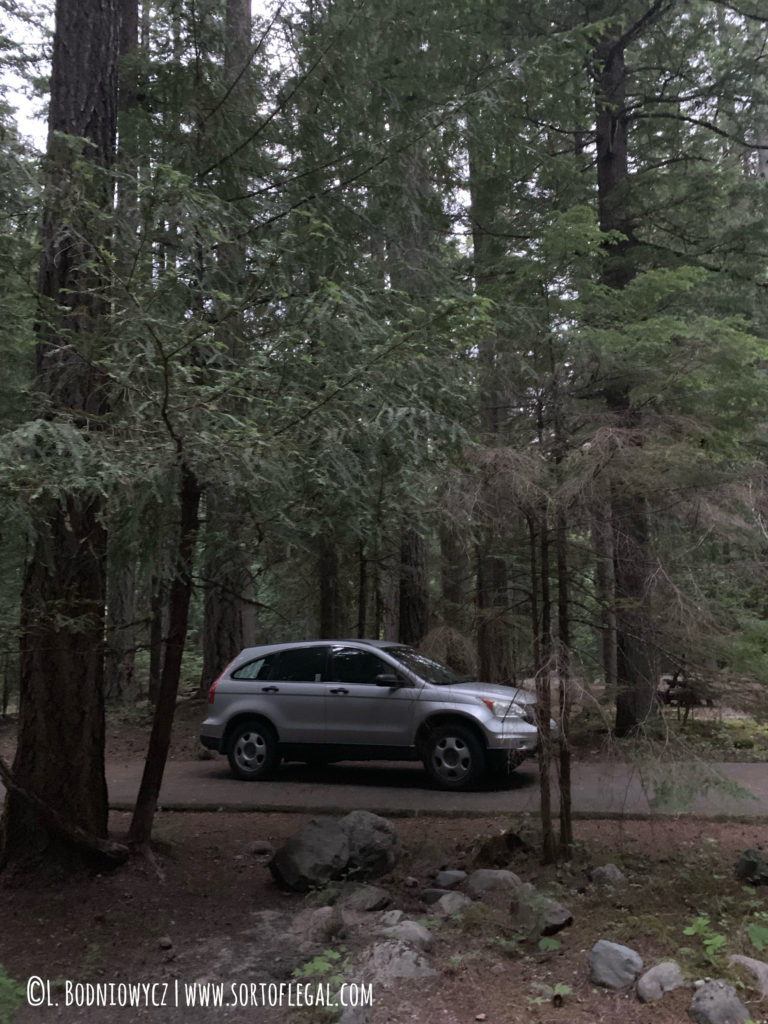
Campsite at night. Pretty but a lil ominous – maybe it was the overcast weather. 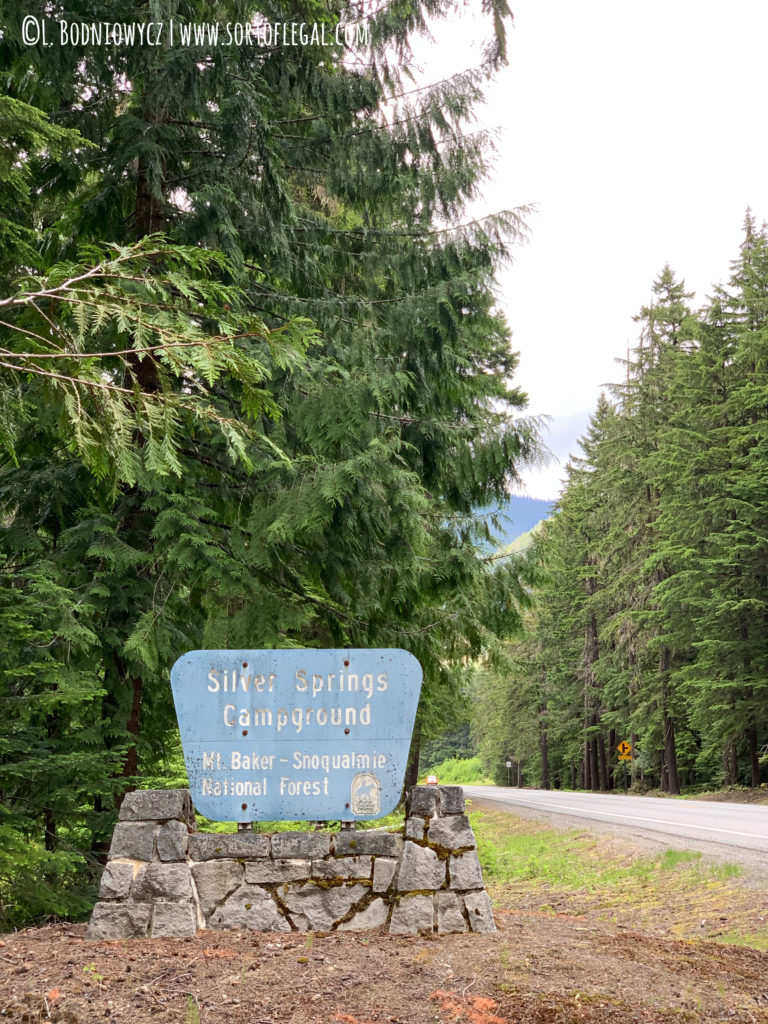
Campground sign by day 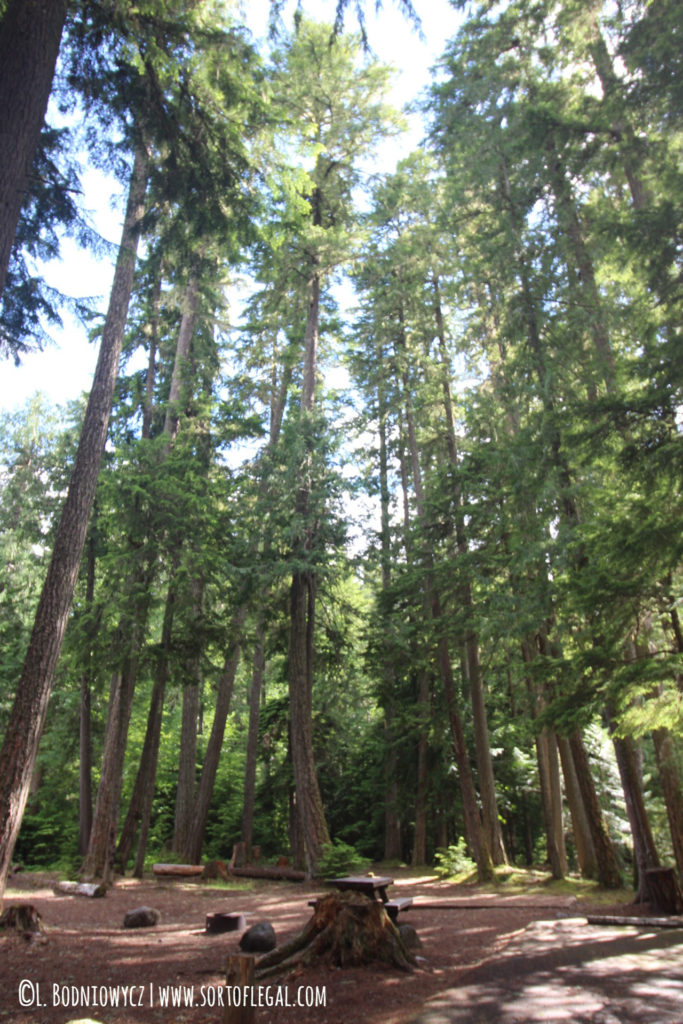
Feeling small.
But, if something did happen, even if it was just an injury, the remoteness and lack of cell service, would make the situation worse. I guess to sum it up, I think the campground is a nice, safe one that I’d enjoy staying at with other people – it just wasn’t the ideal place for me personally to solo car camp.
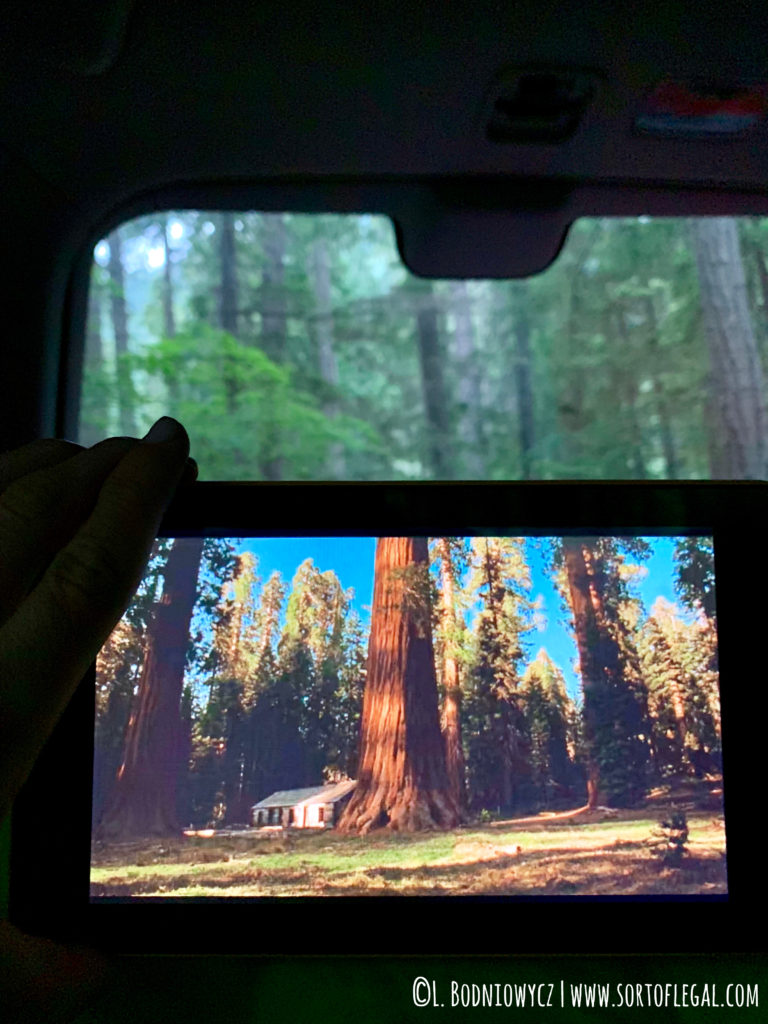
Sleeping in My Car Voluntarily is a Privilege
I’m technically homeless since I gave up my Encinitas, California (San Diego County) studio apartment before embarking on this adventure. So, during that first leg of my trip, I was technically a homeless attorney sleeping in my car. That amuses me…
But I think it’s also important to acknowledge that I am privileged that it is by choice. I camped in my car to save money so that I can be less of a slave to work and have a unique travel experience close to nature. I stayed at nice, safe campgrounds. I popped into a nice hotel for a night to refresh after the first three days. At any point, I could have decided to just stop. I could have found friends and family to stay with for a bit until I could locate a new rental.
Not everyone has the same luxury of choice. There are a lot of people that are homeless, sleeping in their cars or completely shelter-less, because it is their only option. Sleeping in my car voluntarily is a privilege. I’m lucky and I appreciate that.
Need to gear up for your next camping or road tripping adventure? Check out Moosejaw, CamelBak, and good ‘ole Amazon camping to stock up on essentials…and usually catch a deal.

